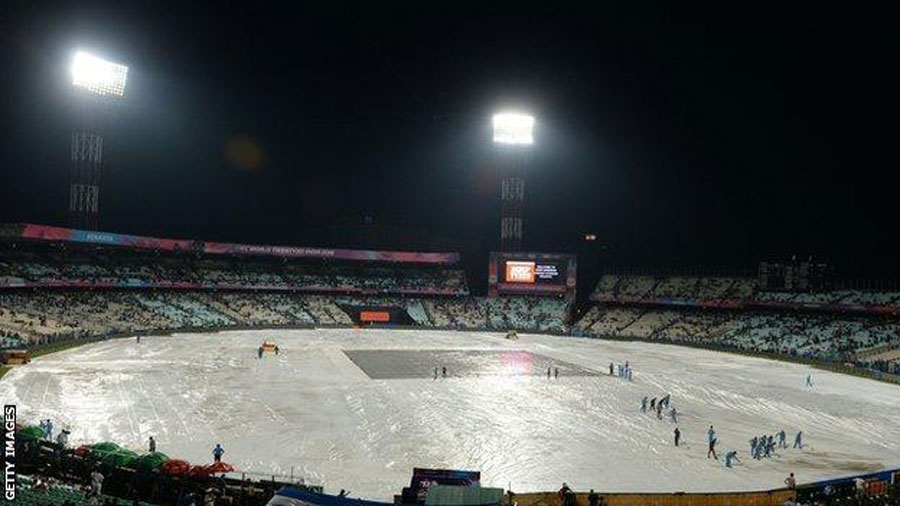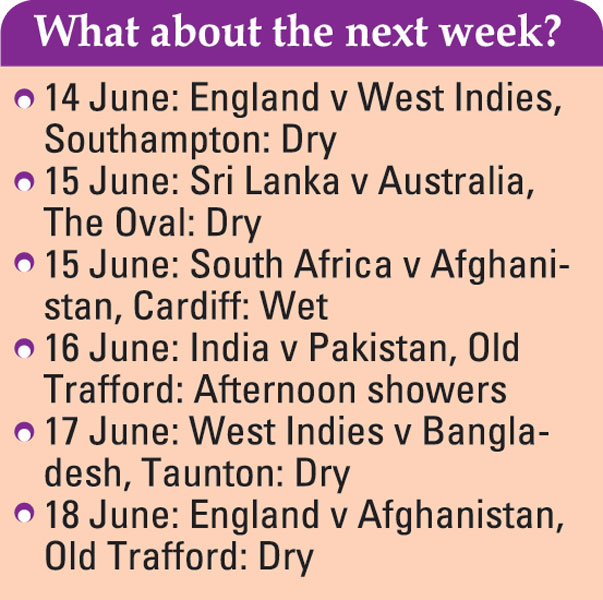
It has been a very wet week in the Cricket World Cup. India's match against New Zealand at Trent Bridge on Thursday was the fourth match of the tournament to be abandoned so far, and the third to be called off without a ball being bowled.
This has already surpassed the previous highest number of washed-out matches in a World Cup - two in 1992 and 2003. Frustrated fans and bemused onlookers have been offering up solutions - but how feasible are they? BBC Sports explain some solution as below:
Build a roof
A common request, especially in light of Wimbledon adding a retractable roof to Court One in addition to the one over Centre Court in time for this year's Championships.
But putting a roof over a cricket ground would be much more complex and costly - tennis stadiums are smaller and most are level, whereas cricket grounds in England and Wales have different-sized stands.

The retractable roof on Wimbledon's Centre Court was unveiled in 2009
It cost an estimated £100m and £70m to build the respective roofs at Wimbledon, which crucially is also the sole location for that entire tournament. It is unfeasibly expensive to build roofs at the 11 cricket grounds hosting a World Cup fixture, even before adding in the cost of first adapting the grounds into a shape that would hold a roof.
Cover the playing surface in a sheet
Sri Lankan groundstaff covered the entire outfield in a massive tarpaulin during their match against England in last autumn whenever it started to rain.
This has the advantage of preventing wet patches forming on the outfield and means it should be quicker to resume play when the rain stops - India against New Zealand never got under way, in part because of muddy areas that did not dry.
It also could prevent a match starting late because of rain on previous days. So why not invest in some big sheets?
As Cricinfo points out, this system needs a lot of groundstaff to be successful and grounds over here may not be able to afford employing the amount of people required.
Such a covering has also been used in the UK before - Edgbaston had the 'Brumbrella' from 1981 to 2001, but it was banned after the ECB found flat covers encouraged 'sweating', making the pitches damper and therefore much more difficult to bat on.

Eden Gardens at Kolkata in India, has adopted the Sri Lankan method of covering the entire outfield
Reserve days
Reserve days were used the last time England hosted the World Cup in 1999, but there are none during the group stage this time round, only for the semi-finals and final.
"We put men on the moon so why can't we have a reserve day?" asked Bangladesh coach Steve Rhodes after his side's match against Sri Lanka on Tuesday was abandoned.
ICC chief executive David Richardson responded by saying reserve days "would be extremely complex to deliver" and increase the length of an already long tournament.
Just play in the rain
Unfortunately, this is always going to be a no-go.
The rain drastically alters the playing conditions and would give sides an unfair advantage or disadvantage.
The ball becomes almost impossible for bowlers to grip and it is dangerous to field on a slippery outfield.
Is it all down to luck? 
David Richardson mentioned the 100mm rainfall we had earlier in the week and how unseasonable it was.
He's right in that 100mm rain in 48 hours is unseasonable, but that was only affecting very small areas in the south east of England and Lincolnshire. Actually, in Bristol and Southampton where the matches were, the weather wasn't unseasonable for June. It was fairly typical really. We just had some rain.
Last year he mentioned we had 2mm and it was warm and sunny, but that was unseasonable. It was a very, very dry month. It's all down to luck. If you had Monday's game in Bristol and Tuesday's game in Southampton, you'd have had a result.
It's just bad luck, but it's been fairly typical June weather.
© 2024 - All Rights with The Financial Express
